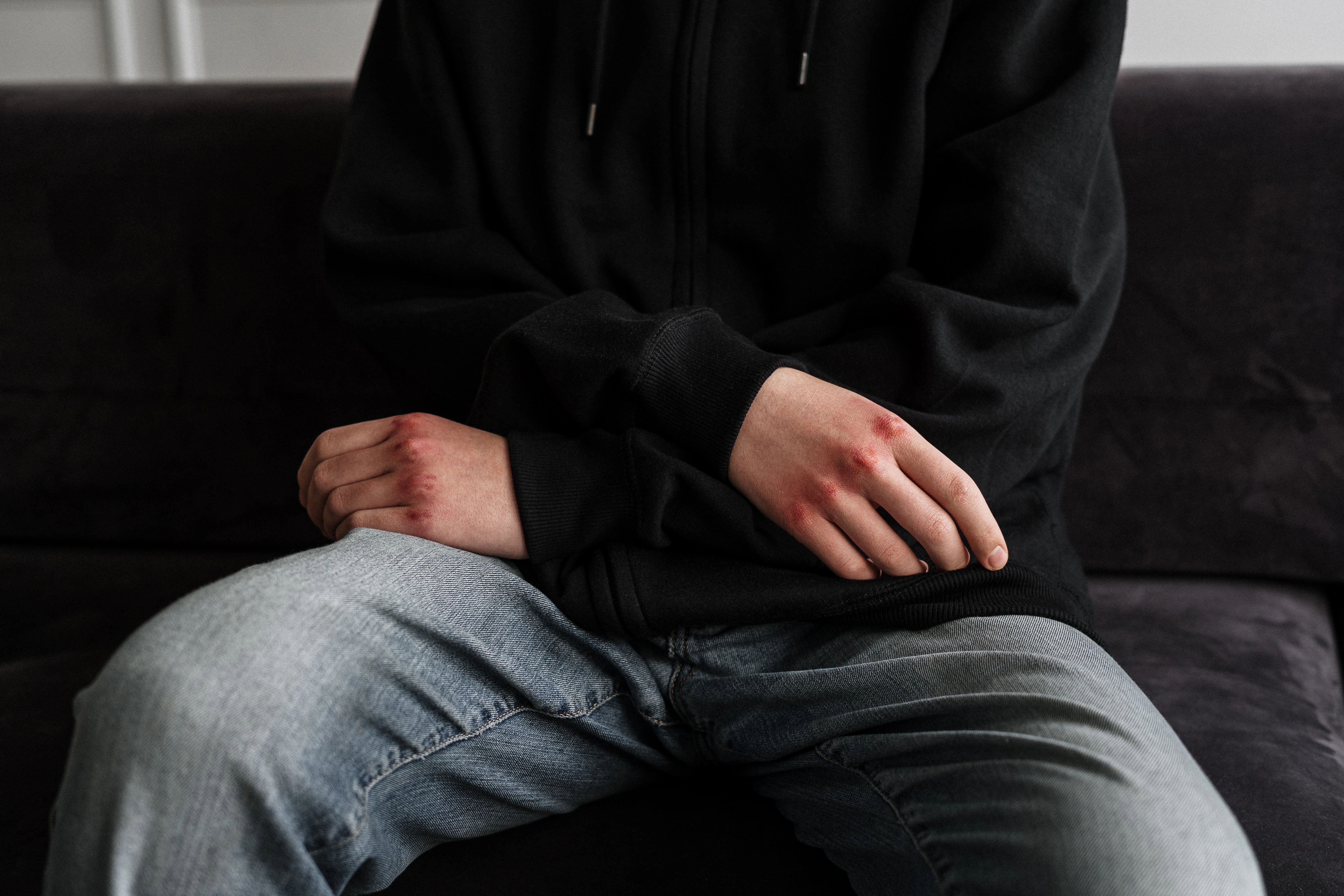Juvenile delinquency prevention is the collective of processes involved in assisting youths to avoid being involved in criminal activities. Since 2006 juvenile arrests have been on a steady decrease and reached an all-time low in 2019, at 67% of arrests made in 2006 (Office of Juvenile Justice and Delinquency Prevention, 2020). Juvenile prevention methods can help in reducing these numbers even further by having a proactive approach to removing juvenile delinquency.
Understanding the causes of juvenile delinquency is the first step in demystifying how to prevent it. Juvenile delinquency is not a problem that is born from a vacuum. Certain conditions in most juvenile delinquents have been linked and have immediate causality to their actions in society. Delinquency is a homegrown phenomenon, coming from the crosslinking between several negative experiences during childhood and early adulthood, manifesting as antisocial and anti-establishment behaviors in teenagers (Saminsky, 2010).
Environmental causes of delinquency have to do with the surroundings and conditions within which an individual is brought up. Environmental causes are factors that are defined by the relationships a child forms with their community. Parental relationships are essential in making or breaking a child’s character. Research has shown that the risk of delinquency increases in children whose parental relationships are characterized by domestic violence and abuse. Other factors that arise in the family dynamic include parent or sibling criminals, abusive siblings, poverty, poor housing, low success in education and lower intelligence, and physical and sexual abuse. Outside the home, the larger environment plays a significant role in determining delinquent tendencies in children. Studies have shown that delinquency can stem from poor school performance, truancy, and dropping out. Students, who get frustrated due to their poor performance, get into drug abuse and, ultimately, delinquent behavior. Dropouts may turn to crime to sustain themselves (Saminsky, 2010).
Lack of positive and meaningful ways of forming an expressive relationship with the environment can also be a precursor to delinquent behavior. These relationships are created by the child or teenagers when they socialize with others or have access to recreational facilities such as parks. At the same time, the environment could negatively express itself to the child and shape their perceptions in life, which ultimately leads them to delinquency. Here, we find factors such as gang violence, informal or congested neighborhoods, and moral decadence in the community contributing to a negative impression of the community to the child. These play a role in molding the child into a delinquent (Saminsky, 2010).
Lastly, the child’s mental health plays a role in determining whether or not they become delinquent. These include their ability to handle stress, emotional instability during adolescence, and other psychological disorders that may manifest as antisocial or anti-establishment tendencies. All these factors must be considered while creating a prevention mechanism for juvenile delinquency. By understanding the problem at the root, prevention mechanisms strive to steer a child’s life from the path to delinquency and proactively engage a delinquent until they become reformed. Juvenile prevention mechanisms then should be targeted at reducing the effects of these factors (Saminsky, 2010).
Effective prevention measures or programs have to meet a collective of criteria to become acceptable. The programs need to have clear goals and outcomes regarding the specific risk factors they are addressing. The programs also need to be highly researched and evaluated to show that they can cause an intervention. Lastly, the program should be reproducible; in that, it can quickly be disseminated and implemented in other settings without much variation to the initial evaluation results (Kim et al., 2015).
Even though many delinquents became that way because of school and its related activities, the school system remains an effective way of preventing juvenile delinquency. Most people spend their childhood years in schools, and only a small percentage of people go through life uneducated. School interventions offer students the opportunity to engage in various programs to students which assist in keeping them psychologically healthy (Franjić, 2020).
Schools are a dynamic environment where many social interactions happen, which can bring positive or negative outcomes. Engaging in these interactions is essential for children because they experience cross-cultural interactions away from their parents. The children can learn soft skills like problem-solving, listening and speaking, and patience while dealing with other children. Activities such as organized play keep children occupied and bond socially with other children, which is essential in combating loneliness and anxiety. Children can also join clubs, which further explore their talents and how to improve on doing the things they like. School clubs are significant for children who do not perform as well as the others because they provide these children with alternative areas of focus such as art, music, or writing, which are critical areas of their development (Catalano et al., 1999).
Schools also offer the opportunity to monitor a child’s behavior. Children who often break the rules or are difficult can easily be monitored, and teachers take corrective action while still young. Teachers can identify children who may require special attention by observing their school behavior (Catalano et al., 1999). Providing them with the love and support that they need at that young age can prove very instrumental in leading them away from the path of delinquency. On the downside, schools still have a lot of work to do in terms of reducing delinquency. Most delinquents had a very rough time in school, which eventually led them to drop out or become anti-establishment. Experiences such as bullying and academic inability are frustrating. Anti-bullying policies need to be enforced to give children a more positive experience in school (Kim et al., 2015). Teachers should not only focus on academics but also do their best in helping children discover their talents, and encourage them to perform in those areas. Encouraging a higher level of satisfaction and security in schools can go a long way in reducing cases of dropouts and thus aid in the preventive measures against juvenile delinquency.
Schools can also offer educative programs on the effects of alcohol and substance abuse. Typical cases of juvenile delinquency involve underage usage of alcohol and other substances. Programs tailored to address the dangers of drug abuse to children can assist them in having the correct information to make the right decisions later on in their lives and prevent veering off into delinquency (Dickinson & Crowe, 1997).
Juvenile delinquency can also be prevented by raising family intervention efforts and creating parental awareness on their role in children’s lives. Parents and the entire family unit, in general, need to be equipped with information about the psychological needs of their children. Delinquency has a direct correlation to lousy parenting techniques. The family is the smallest social environment available to a child. Parents are a significant source of affection and reassurance for their children. Children whose emotional needs are not met by their family tend to become cold, distant, and depressed as they carry feelings of rejection.
Parents should take a healthy authoritative stance in raising their children. Rules in the house must be set from the point of love and understanding, and correcting children must be in a way that encourages them to do better but not to feel unloved or worthless. Children must understand their worth in the family, which builds their constructive social behavior and a healthy personality. Negative upbringings are where parents are asserting complete dominance and control over their children’s lives. Parents in this type of upbringing set very harsh standards for their children to achieve and leave no room for errors. Children raised like this feel misunderstood, unloved, and rejected, which could lead to them abandoning their parents and turning to a life of crime. Another aspect of hostile parenting is uninvolved parenting, where parents are too busy achieving economic or social gains at the expense of creating emotional bonds with their children. Parents need to be educated on the importance of spending time with their children and stop delegating their roles to other people such as nannies or relatives. Parents need to be the best role models for their children because their children look up to them. Uninvolved parents will not monitor their child’s behavior nor teach them socially acceptable behavior. They will also not observe the kind of role models their children have. Negative role models can impart antisocial behavior in children by normalizing it in their presence, potentially leading to juvenile delinquency (Mwangangi, 2019).
Children must also be protected from all forms of physical and sexual abuse. Parents need to form a close relationship with their children and establish trust, and children need to know that they can trust their parents to do the right thing. Domestic physical and sexual abuses from relatives are not uncommon. Should children, unfortunately, go through these forms of abuse, they need to feel safe around their parents so that they can talk about the incident and take appropriate action. If domestic abuse is not handled positively and professionally during childhood, the child’s feelings of bitterness might lead them into juvenile delinquency (Mwangangi, 2019).
Some preventive strategies are employed after a child has already displayed delinquency behavior or has been charged. These are more reactive measures that tend to focus on reprograming the perceptions and habits of juvenile delinquents. Research has shown, however, that these strategies have less success when compared to their proactive counterparts. Multidimensional family therapy is such a strategy. Multidimensional family therapy is a program for treating youths who have begun showing signs of delinquency. It involves adding intervention into all spheres of a youth’s life: social, biological, relationships with others, and personality development. It targets all the risk factors involved in developing juvenile delinquency and tries to mitigate their effects on adolescents’ lives. A trained therapist meets with the individual and their families and offers specialized guidance and counseling. Despite its positive results, the personalized nature multidimensional family therapy is time-consuming and cannot handle many cases of juvenile patients (Hogue et al., 2006).
In conclusion, the best way to prevent juvenile delinquency is to proactively engage with parents and the communities before such tendencies develop. Juvenile delinquents can cause serious harm through physical damage or psychological torment in neighborhoods. Proactive strategies give children the chance to have a positive, constructive childhood, which will usher them into productive adolescent lives.
References
Catalano, R. F., Loeber, R., & McKinney, K. C. (1999). School and Community Interventions To Prevent Serious and Violent Offending. Juvenile Justice Bulletin, 2–14. http://eric.ed.gov/ERICWebPortal/recordDetail?accno=ED435082%5Cnhttp://eric.ed.gov/ERICWebPortal/search/detailmini.jsp?_nfpb=true&_&ERICExtSearch_SearchValue_0=ED435082&ERICExtSearch_SearchType_0=no&accno=ED435082
Dickinson, T., & Crowe, A. (1997). Capacity Building for Juvenile Substance Abuse Treatment. Juvenile Justice Bulletin.
Franjić, S. (2020). SunText Review of Neuroscience & Psychology Schools as Places of Prevention of Juvenile Delinquency. 1(2).
Hogue, A., Dauber, S., Samuolis, J., & Liddle, H. A. (2006). Treatment Techniques and Outcomes in Multidimensional Family Therapy for Adolescent Behavior Problems. https://doi.org/10.1037/0893-3200.20.4.535
Kim, B. K. E., Gilman, A. B., & Hawkins, J. D. (2015). B.K. Elizabeth Kim, Amanda B. Gilman, and J. David Hawkins Introduction. https://doi.org/10.1007/978-3-319-08720-7
Mwangangi, R. K. (2019). The Role of Family in Dealing with Juvenile Delinquency. Open Journal of Social Sciences, 07(03), 52–63. https://doi.org/10.4236/jss.2019.73004
Office of Juvenile Justice and Delinquency Prevention. (2020). Statistical Briefing Book. https://ojjdp.ojp.gov/sites/g/files/xyckuh176/files/media/document/DataSnapshot_UCR2019.pdf
Saminsky, A. (2010). Preventing Juvenile Delinquency: Early Intervention and Comprehensiveness as Critical Factors. In Inquiries Journal/Student Pulse (Vol. 2, Issue 02). http://www.inquiriesjournal.com/a?id=165










